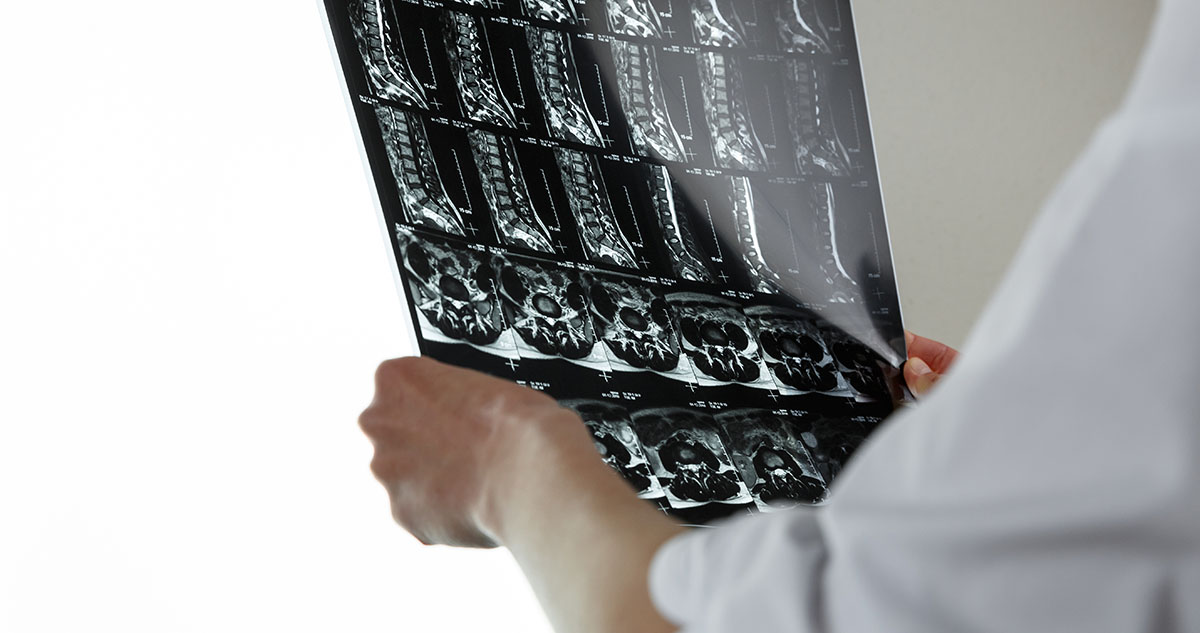How is cauda equina syndrome caused by negligence?

As solicitors specialising in cauda equina claims we see a wide range of mechanisms by which cauda equina syndrome (CES) arises, and many different ways in which sub-standard medical care either causes it or allows it to progress to an irreversible stage.
Guidelines relating to the identification and treatment of cauda equina syndrome were updated last year to better help practitioners understand the ‘red flags’ to spot and hopefully help patients avoid the worst outcomes.
The ‘red flags’ identified were:
- bilateral sciatica
- severe or progressive bilateral neurological deficit of the legs, such as major motor weakness with knee extension, ankle eversion, or foot dorsiflexion
- difficulty initiating micturition or impaired sensation of urinary flow, if untreated this may lead to irreversible urinary retention with overflow urinary incontinence
- loss of sensation of rectal fullness, if untreated this may lead to irreversible faecal incontinence
- perianal, perineal or genital sensory loss (saddle anaesthesia or paraesthesia)
- laxity of the anal sphincter.
So, when might cauda equina syndrome be missed?
How might cauda equina syndrome be missed by a GP?
Very often the issue is a failure to recognise the urgency of a patient’s situation in a primary care context. Research carried out by the Medical Protection Society (MPS) in 2016 found that failure or delay in diagnosis of CES was one of the top five errors leading to the most ‘expensive’ claims against GPs. As a consequence, the MPS worked with the National Institute for Health and Care Excellence (NICE) to produce revised guidelines on ‘red flags’ for CES, as noted above. The previous ‘red flags’ were regarded as setting too high a threshold for urgent investigation, causing patients to be referred for treatment too late.
Whether the new guidance, issued in 2018, has made a significant difference to practice is too early to say. However, the pattern of GPs setting too high a threshold for referral, underestimating the significance of symptoms, and failing to inform patients of the ‘red flags; to look out for, is certainly one that we recognise as lawyers dealing with these cases. Many of the cases we see include these features.
A common story is of a patient attending with worsening lower back pain, radiating into the legs and this being dismissed as “just sciatica”.
One of the changes to the recent guidelines was to recognise bilateral sciatica as a ‘red flag’ for CES, bilateral sciatica being a potential sign of compression of the cauda equina nerve roots.
Naturally GPs are becoming more risk-averse in the context of advice which they give to patients who may be at risk of CES, and this can only be a good thing.
How might cauda equina be missed by a hospital?
The second area where we see many claims arising is in Emergency Departments.
Many patients with CES symptoms attend A & E, either of their own volition or having been advised to by their GP. Delays at A & E can be crucial in determining the outcome for a patient with CES; it is a medical emergency and every further delay encountered lessens the chance of a favourable outcome.
We have a number of cases where patients have lost bladder control while waiting in A & E. Total loss of bladder control is a crucial stage in CES as it often signals the point when the condition becomes ‘complete’ – the point when the damage is irreversible. When a patient is at such a critical stage it is obvious that the quality of triage in A & E is of vital importance; identifying that the patient may require emergency treatment at that early point may make the difference between permanent damage and the chance of a good recovery.
Accident and emergency care is at the centre of controversy and is also the context of one of the most significant legal cases of recent times in the area of clinical negligence. In fact, it would now appear that delay, misdiagnosis and poor treatment in A & E departments are the top cause of NHS negligence claims, with NHS Resolution reporting 1,395 A & E related claims in 2017/18, a 7% increase on the previous year.
Meanwhile the case of Darnley, decided by the Supreme Court in 2018, determined that a Trust was liable in circumstances where a receptionist misled a patient about waiting times, causing him to leave the A & E department and go home, as a result of which he sustained permanent brain damage.
It seems likely that cases of negligence in relation to CES will continue to arise in A & E departments against this background of soaring demand on A & E services, increasing claims generally, and an arguable widening of the duty of care owed to patients, as demonstrated by Darnley.
How can cauda equina syndrome arise as a result of negligent spinal surgery?
Once CES patients are admitted to hospital, sadly our experience of claims suggests that there is still scope for poor care to worsen outcomes.
We have seen cases where delay in performing an MRI scan of the lumbar spine has caused irreversible damage, and cases where an MRI scan has been performed, demonstrating cauda equina nerve compression, and there has still been avoidable delay in transferring the patient to a hospital where the required spinal surgery could be carried out, again causing irreversible damage.
Sometimes CES arises through substandard medical care which has nothing to do with delay. It may arise from a spinal operation which goes wrong. We are dealing with a number of such cases, where for example a lumbar discectomy and decompression goes wrong. A haematoma may develop, creating pressure on the nerve roots and causing CES, even where the patient had no CES symptoms prior to surgery.
Overall, our experience is that most CES negligence claims arise from delay in treatment. Those delays may occur at any point in the healthcare system, whether it is a failure by a GP to recognise and act on ‘red flags;, a failure of effective triage at A & E, delay in performing an MRI scan, or poor decision-making once the scan results are available. The guidance has improved, for GPs, and it is hoped that a wider realisation of the need for a lower threshold for referral will begin to reduce the numbers of patients suffering avoidable permanent injury from CES.
If you have suffered negligent treatment of a cauda equina injury, and want to find out more about making a claim for compensation, please contact our enquiries team today.
Call now








